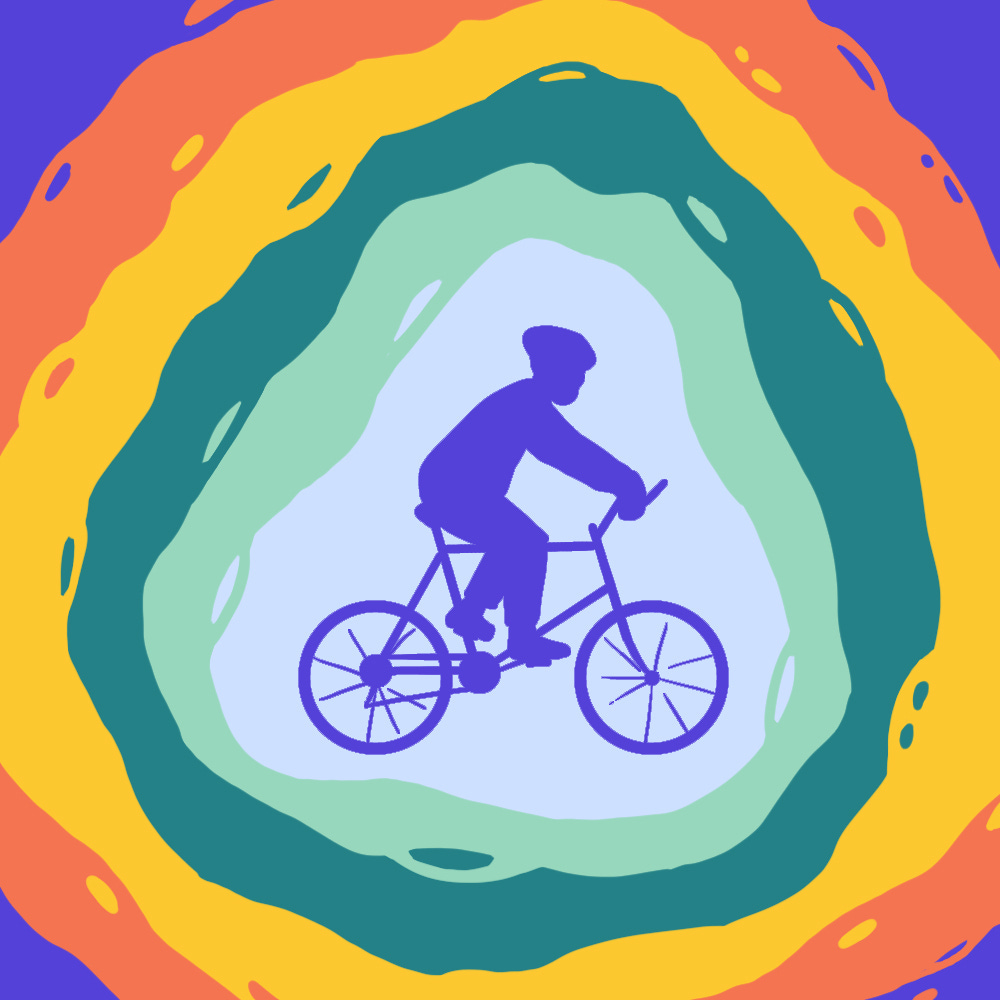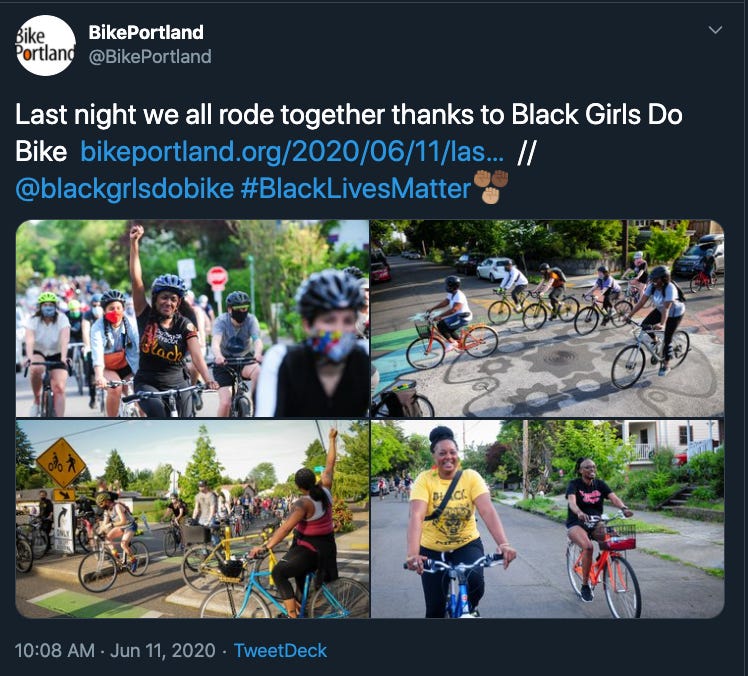Welcome to Civic Signals, the newsletter where spokes meet nodes.
This week: Flame wars, bicycles, convenience stores — Reconsidering the bicycle as a disruptive technology on par with your smartphone. How biking, like commenting, can't be made safe just by putting on a helmet. Finally, we consider the urban corner store, and wonder where the equivalent of its intimacy and vulnerability can exist online.
Keywords: Flame
v. the act of posting inflammatory insults online

Social researchers have studied “flame wars,” a heated messaging fight in online forums, to explain why computer-mediated communication can encourage hostile behavior through anonymity, self-awareness or a loss of inhibitions online. Without face-to-face discussions, people lack the social context to make a mental model of what other participants’ intentions may be in digital spaces.
What’s clicking
Online
Riding out quarantine with a chatbot friend - New York Times
Meet the Big Tech critic behind the Hey, Basecamp’s radical new email - Fast Company
Study: White supremacist groups are “thriving” on Facebook, despite extremist ban - Huffington Post
Offline
How architecture could help us adapt to the pandemic - New York Times
COVID data crunchers see coronavirus racing down America’s highways - The Daily Beast
Jeff Bezos will finally get grilled by Congress - Recode
Linked
“The Black Lives Matter Foundation” raised millions, but it’s not affiliated with the BLM movement - BuzzFeed News
Instagram’s CEO says the platform is examining how its policies affect black users - The Verge
Decrypted: The tech police use against the public - TechCrunch
This week’s Double Click:
Poet Eve Ewing connects 1919 Chicago to today’s racial unrest - Fresh Air
Bicycle of the mind

One of the flashiest Apple slogans was Steve Jobs’ saying that the computer is the “equivalent of a bicycle for our minds.” Jobs cited a chart from Scientific American measuring energy efficiency of animals and machines, from rabbits to helicopters. “Man” is just in the middle of the pack of the animals, but “man with a bicycle” becomes the efficient user of energy. With its invention in the 1870s, the bicycle is no less powerful as a social tool. Bicycles became the driving force for building roads and cities, a generator of manufacturing and marketing, and a vehicle for social change like women’s suffrage.
As we undergo a COVID-19 induced bike boom, that history is echoing: National Geographic harkened back to the bicycle as a “hugely disruptive technology, easily the equivalent of the smartphone today,” and in the New Yorker, Jody Rosen details how the bike’s emancipatory power has made it tool of social justice and a vehicle of protest. But the liberating qualities of the bicycle run up against societal barriers, both literal and figurative. In Bicycling, Tamika Butler of Toole Design describes how system oppression needs to be top of mind in this new cycling renaissance.

Butler argues the white-dominated spaces of government agencies, biking companies, and other organizations have to reckon with how they have pushed people aside in bike advocacy, contributing to systemic oppression against people in cycling who identify as Black, Indigenous, or People of Color (BIPOC). As Butler writes, “[O]nce we can get past these things as a bicycle community, we can finally celebrate what bicycling should truly be about—the power to be free and move freely.”
For much of the bike’s history, the industry has emphasized individual safety, advising riders to wear a helmet and “take the lane,” centering around a cis white male’s idea of what poses a danger. The same blindspot applies to our online spaces. The computer may be a powerful tool, but so much of how the internet has been designed has made way for racism, sexism, and harassment.
Just consider this week’s news about Google’s ban on its ad service for racist content: The search giant’s negotiations with the Federalist hinged on the online conservative magazine eliminating its comments section. Many other news organizations, such as NPR and the New York Times made the decision to drop comments sections years ago because of their tendency for toxic discussions. Writers of color and women face disproportionate harassment on the internet, and for too long, the mantra of self-care has been “never read the comments,” without questioning if comments accomplished the goals of news agencies.
In this analogy, vulnerable people on the internet are like pedestrians and bicyclists, trying to get around the internet and interacting at a personal level, but facing a risk posed by an semi-anonymous majority driving bigger vehicles on the street, where the view from the windshield dehumanizes people. Those unpredictable dangers make bicyclists lose their expanding sense of freedom, as does the ability to participate in online discussions when racist and sexist commenters flow into a space like traffic. Ultimately, that limits people’s sense of mobility online—and it can’t just be solved by putting on a helmet.
Make it Digital: Corner Store

One neighborhood staple that has resisted the all-consuming force of e-commerce is the corner store, or convenience shop. In dense urban communities, they’re an essential third place, where you can pick produce, or batteries, or pet a cat. Corner stores have proven to be a lifeline in the midst of a pandemic, a place where what you need can be in walking distance even when things seem fragile in the world.
Corner stores are a place where trust is built over time, too. In Minneapolis, a neighborhood market, Cup Foods, found themselves at the center of the police killing of George Floyd, who was a regular at the store, according to the New York Times. While a new teenage clerk at the store called police in the first place, the store owner, Mahmoud Abumayyaleh, had earned the community's trust after more than three decades in the community. (The reasons for why the store, run by an immigrant Muslim family, felt legally compelled to call the cops, has even more to do with the corner store’s complicated roots in neighborhood policing.) Still, Abumayyaleh was able to turn that goodwill into understanding as he answered protesters over the past three weeks, admitting his mistakes, voicing support for the protests, and turning the store into a makeshift vigil for Floyd.
I was struck by the intimacy and vulnerability that a corner store affords when listening to the conversations that Diane Wu of This American Life recorded over an entire night at a convenience store in Brooklyn. The store allows enough space for people to have candid discussions about race amid the energy of the protests.
It makes me wonder what makes a space like this feel safe that could be emulated online: Where do you find the chance to run into strangers that you get to know? What kind of digital spaces give room to talk through difficult, sometimes uncomfortable questions? What would it mean to have a space build that kind of trust online?
Don’t be shy! The physical-digital metaphors are never perfect but that’s the point: they’re a tool to think with, one we don’t often use to consider our digital spaces and what we can do to make them places where public life can thrive. Send us a note with your ideas at civic.signals@gmail.com or @ us on Twitter with #MakeItDigital.
See you next week,
Andrew Small
Illustrations by Josh Kramer
Civic Signals is a partnership between the Center for Media Engagement at the University of Texas, Austin and the National Conference on Citizenship, and was incubated by New America. Please share this newsletter with your friends!



